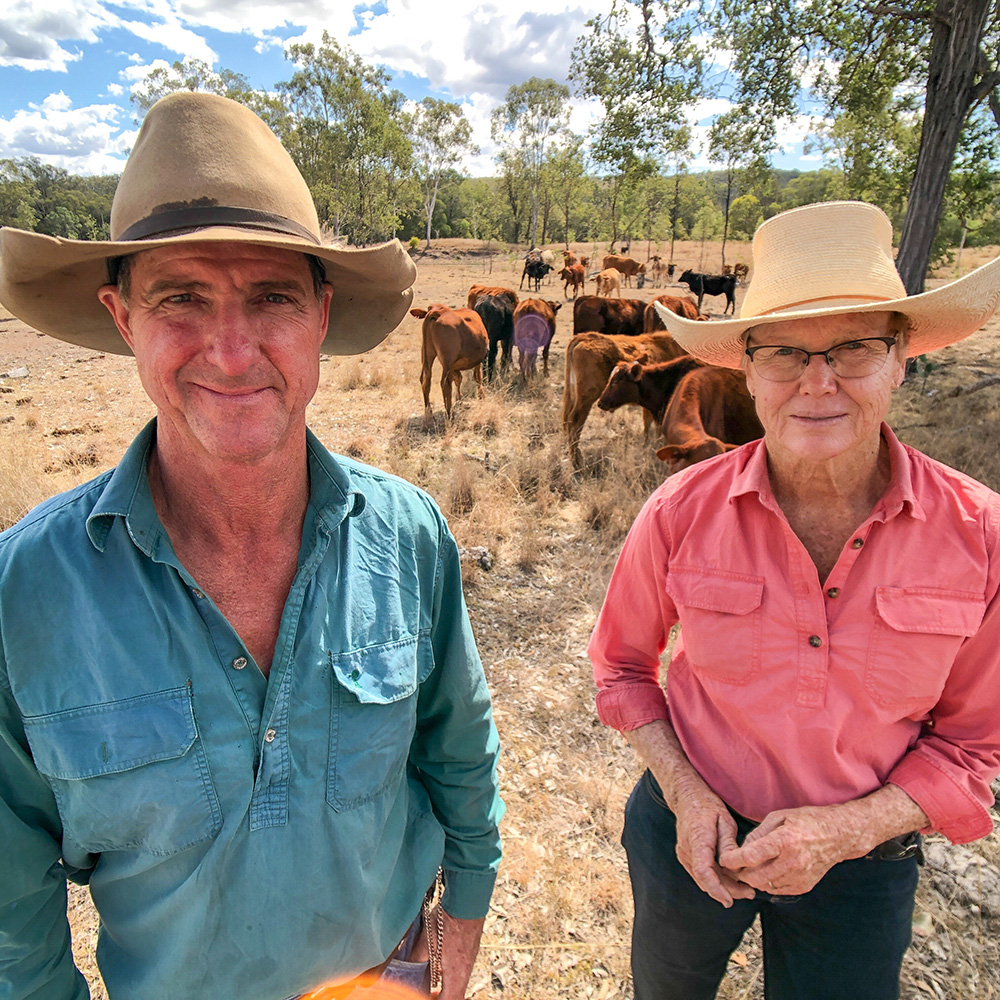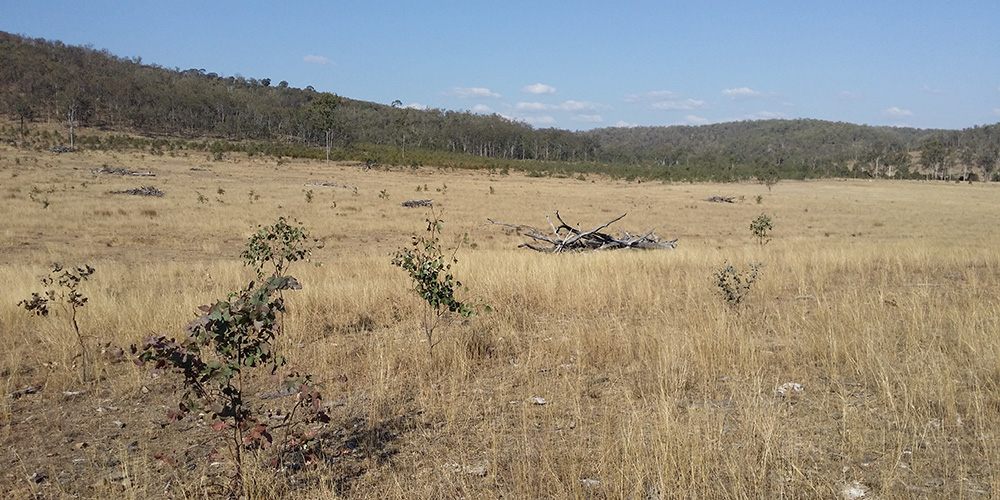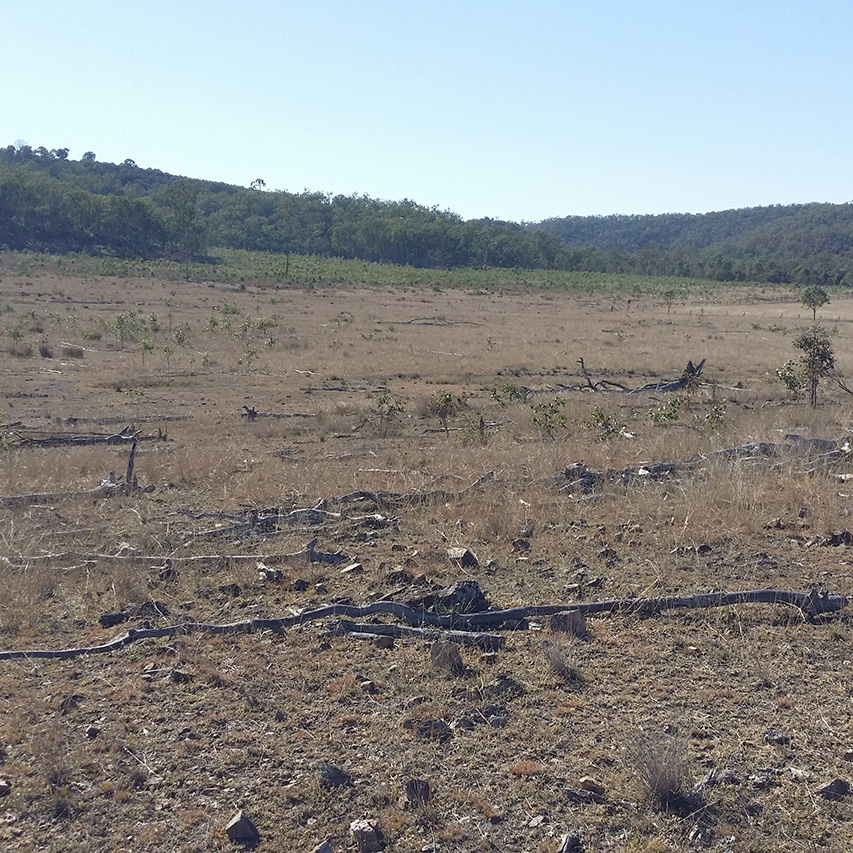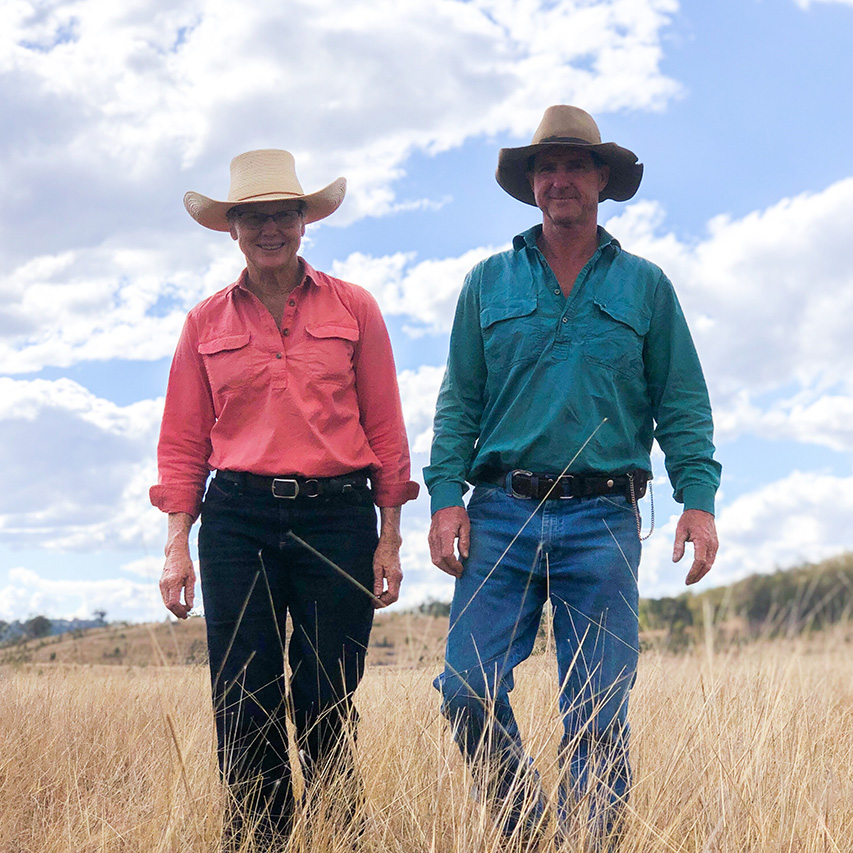PRODUCER CASE STUDY
Russell & Catriona Murdoch
Holroyd, Booubyjan
How Russell and Catriona Murdoch changed their business, their lifestyle and their priorities through regenerative agriculture.
Key points
- “Holroyd” is located at Booubyjan, south of Gayndah, Queensland
- Operation is 1900ha with 400 beef cattle
How has production improved as a result of those strategies?
By creating those smaller lots and implementing significant rest periods for each paddock with rotational grazing, we’ve been able to greatly improve our utilisation of pasture and increase our pasture yields four-fold. At the same time, we’ve protected the soil and ecological health.
Where are you from?
We’re originally from southern New South Wales and wanted to expand our cattle enterprise there but were landlocked within very expensive country. We travelled from NSW to Gladstone in Central Queensland, looking at eleven properties in fourteen days, and ended up here at Holroyd in 2016 as it ticked off most of what we were looking for. The property has a really good balance of country including creek flats, softwood scrub and brigalow, and there are a lot of different soil types, so we thought it would meet the requirements we had for our business.
Why did you decide to implement regenerative agriculture practices?
When we arrived at Holroyd it was rundown and had scorched areas of land due to over-grazing and limited watering points. We saw a lot of potential to create a sustainable and profitable grazing operation that also prioritised soil and ecological health. At that point, we became part of Project Pioneer and started to change the way we do things.
What were the changes you made?
A lot of the work we have done has been subdividing paddocks into 10 to 20ha lots and the strategic placement of more troughs and water infrastructure. This has allowed us to implement an effective rotational grazing system that better utilises pasture, while also decreasing how far cattle have to walk to water and protecting riparian zones.
What have been the ecological results?
Since implementing regenerative practices there has been an increase in groundcover from 50 to 80 per cent across the property. Biodiversity has also spiked, and we’ve seen the return of a number of native legumes and blue grass – amongst other species.
Like much of Australia, you’ve experienced extreme drought on ‘Holroyd’. How has regenerative agriculture helped you to better handle tough conditions?
By using data from grazing charts and feed budgeting, we made the decision to reduce cattle numbers early, when they were still in good condition, and have been able to keep a good body of grass. You don’t have to travel far down the road and that is not the case. When it does rain, the country will come away so much more quickly and we’ll be ready to buy stock – ideally before the price increase.
And how has the transition benefited you personally?
Russell: I worked off-farm for 30 years and was very keen to be in the cattle operation with Catriona full-time – and this has allowed us to make that happen. We previously had some ineffective communication strategies, but we’ve identified each of our roles and responsibilities based on what we are good at. Now, when I’m given direction, I can take a couple of breaths, think and not snap!
Catriona: Project Pioneer has given us more tools than just managing grass and cattle, it has given us tools to manage communication – which has been a huge advance in a husband and wife situation, and one of the key things that has helped us develop and move ahead with our business. I have always been like a bull at a gate, but now understand not everyone has to operate like that!
What are the other, consumer-focused benefits of farming in this way?
The regenerative management we have adopted is not only good for the country, but because it is so good for the soil and the environment it comes through in the goodness of the product we produce. That then has a flow on effect for people, health and chronic disease.
Why would you recommend this approach to other graziers?
We’ve been able to manage our environment effectively and efficiently both for better environmental outcomes and profitability. You really can’t go wrong. It’s now so inherently obvious to us that everyone should be doing it. We’re also supported by a network of like-minded people who we can pick up the phone to and ask any question, no matter what time it is. We’re just so grateful to have them.
How does your enterprise demonstrate to consumers that we take our responsibility to look after the ecosystem very seriously?
Like most family-operated farming businesses, as stewards of the land we are providing management not just for the sustainability of our business but for the long-term sustainability of the environment. In doing this, we also provide environmental services to the wider community, people, plants, animals and the entire ecosystem. This is demonstrated by our management style of maintaining eighty percent or greater ground cover, limiting stock access to riparian zones at critical times, and control of pests – all of which comes at a cost and also benefit to the business. We would love and encourage some method of on-farm consumer visits as it could only bring positive things!
GET IN TOUCH
Want to talk more about Project Pioneer, or how RCS can help you deliver industry-leading results?




Project Pioneer is funded by the partnership between the Australian Government’s Reef Trust and the Great Barrier Reef Foundation. The project is delivered by RCS with support from WWF, Maia Technology, Farm Map 4D and CQUniversity.




